States Open Their Doors to Clean Energy
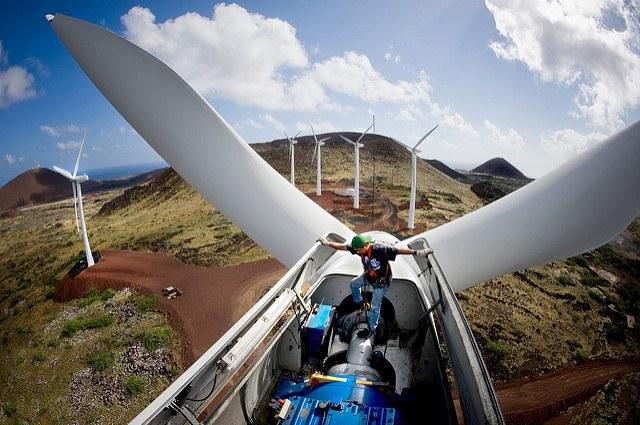

By Alli Gold Roberts
As state legislatures kick off new legislative sessions around the country, clean-energy policies will likely remain on the agenda in a number of states.
Unprecedented business support for climate action and clean energy investments will be a key factor for legislatures hoping to attract the attention of businesses interested in seizing fast-emerging clean energy opportunities. More than 720 companies and investors (and counting) are calling on President Trump to support the Paris Climate Agreement and state and federal low-carbon policies. Many of the companies are iconic household-name brands that have already made significant investments in renewable energy and energy efficiency in states with supportive policies.
While lawmakers get to work tackling budget deficits, unemployment, infrastructure, public health concerns and more, the opportunity to deepen their commitments to clean energy is growing. Strong, stable clean energy policies are proven winners in providing carbon-free, cost-competitive power that is spurring economic development and creating new jobs.
According to a new analysis by the Retail Industry Leaders Association and the Information Technology Industry Council, state policies are making it far easier for the retail and information technology sectors to procure renewable energy and expand customer choices on energy sourcing.
For example, Iowa has tapped its abundant wind energy resources to attract numerous large corporate buyers with utility green tariffs and third-party power purchase agreements (PPAs). Google and Facebook have procured more than 500 megawatts of wind power with Iowa’s major utility, MidAmerican Energy, resulting in new jobs, tax revenues and other economic benefits. The state can secure additional corporate investments by making it easier for companies to do onsite renewable energy projects, too.
Utility green purchasing options, access to third-party clean energy solutions and community solar are just a few of the policy mechanisms that large commercial and industrial customers can use to meet their increasingly ambitious carbon reduction goals.
Renewable energy and energy efficiency portfolio standards, which set specific statewide goals for efficiency gains and renewable energy sourcing, are also catalyzing significant utility investments in clean energy, which are diversifying their energy supplies and reducing reliance on new, oftentimes more costly fossil fuel plants. Analysis by the Lawrence Berkeley National Laboratory shows that renewable portfolio standards are saving states billions of dollars due to reduced air pollution, reduced public health impacts and other societal benefits.
In the waning days of 2016, governors and legislatures in Illinois, Michigan, New York and Ohio all demonstrated their continued support for clean energy. And, with renewable energy costs getting cheaper and companies ramping up their commitments, we expect this momentum will continue in 2017. It is now up to state policymakers to seize on this positive momentum by enacting clean energy policies that will benefit both their economies and the climate.
Image credit: U.S. Air Force photo/Lance Cheung via Flickr
Alli Gold Roberts is a state policy manager at Ceres, a nonprofit sustainability organization mobilizing companies and investors to take stronger action on climate change and other global sustainability challenges. Roberts leads the organization’s clean energy policy initiatives in the Midwest, Southeast and New England regions.
Long-term strategy improves business performance


Could Trump's Border Policies Kill Commerce?


Buying vegetables during the winter can often seem like a deciphering game. Deep-red tomatoes native to cooler climates slowly disappear from shelves as the colder months tide on. It's one of the first hints that snow will soon be on the horizon and the fresh lettuces and green onions from local farms will fade from sight.
But in markets, local summer produce is usually replaced by a cornucopia of choices, all with their own cryptic little signs meant to hint at country (and sometimes state) of origin.
It's the ones that say U.S.-Mex or Can-Mex that I find the most interesting. These labels indicate that although a fruit or vegetable was produced by a company of one country, it was actually grown in another. In flights of fancy, I like to think of that as a sense of partnership between communities: One country offering the ingenuity and resources, and the other providing the manpower to ensure that all of North America stays fed.
In reality, however, I know better. Those "partnerships" are one-sided at best. Mexican tomato-pickers receive a pittance compared to Florida field workers. And even laborers in Florida have become the subject of human rights claims in recent years.
According to a 1996 University California Davis publication, Mexican workers received an average of $3 to $5 per day for harvesting tomatoes that are then shipped to hungry American or Canada consumers.
That's not to say the Mexican government and companies don't benefit. Despite abysmal earnings that many equate to slave labor, Mexico still commands the lion's share of U.S. imports. According to the U.S. Department of Agriculture, 71 percent of imported tomatoes come from south of the border. Over the past decade, that translated to almost $8 billion in revenue.
That surge in production is tariff-free under the North American Free Trade Agreement (NAFTA). And the stories of struggling Florida growers undercut by vast farms in Sinaloa, Mexico, have become an issue of contention for some who see Mexico's economic success as America's loss.
This week President Donald Trump attempted to tie that controversy to another issue of dispute: what he claims are America's porous southern borders. Following up on a promise he made repeatedly during his campaign, Trump affirmed his plan to, once and for all, solve the problem of illegal passage from Mexico.
He'd build a wall -- a $7-million-per-mile wall (roughly $10 billion), for which he says Mexico will ultimately foot the bill.
Not surprisingly, Mexico's President Enrique Peña Nieto declined the offer to pay for the wall.
On Monday, after Peña Nieto cancelled a visit to the White House on the recommendation of his advisors, the Trump administration upped the ante, suggesting that a 20 percent tax could be imposed on Mexico's imports.
While administration later took a step back from that proposal, calling it just one of a "buffet of options," the impact was already being felt in Mexico and along both sides of the U.S.-Mexico border.
Cross-border commerce dipped after the November elections and continues to drop off at the El Paso-Juarez border crossing. And it isn't just the Mexican small businesses that are noticing the dearth of shoppers, writes Dallas Morning News reporter Angela Kocherga.
Kocherga, the paper's Mexico border reporter, spoke with El Paso County Commissioner David Stout in late December -- and his comments pretty much sum up the impact of the detente between the two administrations.
"The shoppers who come over from Mexico are very important, especially for taxing entities," Stout said. By 'taxing entities,' he means the businesses large and small that line El Paso's streets and for generations made a living from cross-border travel and tourism. "We rely heavily on the sales tax revenue we generate."
Fear of being detained under Trump's more aggressive immigration stance has also helped to stem the flow of what has been for years a cooperative exchange of travelers, high-school students and commerce.
Communities across the Rio Grande River in Mexico's historic Ciudad Juarez have felt the impact as well. Patrick Iber, an assistant professor at the University of Texas, El Paso, recounted some of the economic loss Mexico felt since Trump's election. It is the small, struggling towns along the border that "are failing," and that in turn further diminishes the ability to shop in U.S. businesses across the border.
And while the Trump administration seems to have discounted the idea of imposing a tax on Mexico's imports for now, the proposal still hints at a disconnect between the administration and those most likely to feel the brunt of any fees or taxes. And towns on both sides of the border could be plunged into a recession if the federal government were to impose a tax on imports from Mexico, said Tom Fullerton, an economics professor at the University of Texas, El Paso,
“It could lead to plant closures in Mexico, and that would lead to factory cutbacks in the United States,” Fullerton said. A 20 percent tax would affect border cities that help shuttle the imports and the workers.
And it would make vegetable imports like Mexico's prolific tomato, avocados, cucumbers and other produce shipments unsustainable. The cost wouldn't just be borne by the Mexican companies that work in partnership with U.S. and Canadian manufacturers, shippers and growers, but by U.S. and Canadian consumers. And as Fullerton pointed out in relation to border cities that rely on that valuable commerce, ultimately, and unsustainable trade "would give Mexico City and Ottawa [a reason] to cancel the entire agreement."
For West Coast communities that rely on that south-of-the-border resource of winter sun and plentiful manpower, the NAFTA partnership may seem disproportionate to an administration that must juggle a U.S. deficit. But for now, tomatoes may well have a lot more barter power than concrete walls and trade wars.
Image credit: Flickr/16:9clue
Investors Put Over $8B Into Conservation: Can It Continue in the Trump Era?


By Kelley Hamrick
On a mild, rainy day in Washington, D.C., America inaugurated its 45th president. The incoming administration represents a fundamental shift from the outgoing Obama administration. And the White House website was updated accordingly. Instead of a clean-energy future, WhiteHouse.gov now announces: “President Trump is committed to eliminating harmful and unnecessary policies such as the Climate Action Plan and the Waters of the U.S. rule.”
However, labeling something “unnecessary” doesn’t make it so. Our environment remains beset by challenges: Global emissions are still rising, fertilizers and other chemicals continue to pollute waterways, and our forests remain under threat from development.
The United States may still meet its climate pledges, thanks in part to cities, states and even activist corporations. But without deeper cuts, the world will still fail to keep temperatures from rising beyond 2 degrees Celsius – a critical red line.
A rising tide of capital
The good news is that additional action is being taken – by individuals, companies and states. And the better news is that this momentum is increasing.
In the past decade, from 2004 to 2015, investors directed $8.2 billion toward preserving forests, protecting watersheds and more, according to the State of Private Investment in Conservation 2016 report which Forest Trends’ Ecosystem Marketplace released last week.
This is an upward trend: Most finance came in 2015 alone, when investors committed $2 billion.
But barriers remain to unblocking additional capital. And investors cited returns, management experience and transaction sizes as key concerns.
They put their money where they were most comfortable: in sustainable forestry and agriculture, rather than in emerging “environmental markets” such as those for carbon offsets or watershed investments.
That could be because these sectors have simply been around longer, and investors perceive environmental markets as riskier than more traditional sustainable agriculture programs. This is a perception that must be addressed if these markets are to grow.
“$8.2 billion is really less than a drop in the bucket when you think about $55 trillion or so washing around in capital markets,” Forest Trends CEO Michael Jenkins said at a launch event earlier this month.
Many roads to conservation
How do we reach even a fraction of $55 trillion?
Ultimately, investors need to see more viable investments. But in the meantime, not-for-profit and public organizations can help address current investment barriers.
Eric Hallstein, director of conservation investments at the Nature Conservancy (TNC), sees a role for nonprofits in providing expertise and research around deals – which is why the Conservancy created its own impact investing unit: NatureVest.
The unit aims to “create and execute investable deals" and has $1 billion to this end. Outside of the small investment team, Hallstein sees value in tapping into broader TNC resources: from using donor capital to source smaller deals that otherwise wouldn’t be financially viable, to working with TNC’s staff of more than 600 scientists help quantify non-traditional ecosystem services.
“We’re seeing pretty significant deal flow across everything that we do, but much of it requires foundation or philanthropic support to get started, because the diligence itself relative to the deal size doesn’t necessarily ‘pencil out,'” Hallstein explained.
“Our expectation is that at some point, that sweet spot for [TNC], if we’re successful, will move over and create markets that capital markets will begin to invest in.”
Politics provide key conservation infrastructure
Another way to encourage conservation markets is to mandate them – and this, unfortunately, may prove difficult in the current political climate.
Still, one of the longest-running – and most successful – environmental markets in the United States evolved out of the Clean Water Act. Section 404 essentially tells companies that if they build on a wetland, they need to make sure another wetland is created nearby.
Most businesses have no interest in building wetlands, so they instead contract out to environmental project developers. Now, over 1,500 habitat credit banks are in operation in the United States, and institutional investors are starting to show interest in this market.
Ecosystem Investment Partners, a private investment manager that invests in mitigation banks, is now on its third fund and has raised capital from New Mexico’s Teachers Retirement Fund. Meanwhile, Resource Environmental Solutions, a mitigation banking company, received a “significant investment” from multinational private equity firm KKR to grow its business last year.
As Forest Trends’ Atlas of Ecosystem Markets in the United States shows, mitigation banking has taken off thanks to this federal mandate, while other environmental markets – typically regulated at the state level or not at all – have grown more slowly. For example, Nutrient trading, a type of watershed market, has been implemented in only some states and had mixed success due to opaque rules and restricted opportunities for project developers to get to market.
Forest carbon projects provide another vehicle for conservation finance in the United States. They were initially developed to meet carbon offset demand for corporations voluntarily acting on climate change. Since then, California’s AB32 law has created a statewide cap-and-trade program and spurred additional projects. However, the state now faces uncertainty with a lawsuit pending against the cap-and-trade program.
Jeremy Grantham, noted investor and co-founder of the firm Grantham, Mayo and van Otterloo, during his keynote address at the launch event recognized the value of strong public policies by saying: “I think we were extremely unlucky environmentally [in this election]. I mean, I sound like a Democrat but I’m not really; I’ll vote for the devil if he has a great carbon tax.”
Next steps
It’s doubtful that environmental markets can reach the necessary scale in a hostile regulatory environment. But it’s also telling that most of the investments we tracked went into sustainable farming and forestry – which require no legal mandate.
At the same time, private-sector leaders made it clear that they are voluntarily working toward a low-carbon future. In addition to the 206 companies that pledged to make science-based emissions reductions targets, 695 institutions – including pension and hedge funds – have pledged to divest from fossil fuels.
For the latter, Grantham noted that it only takes a few hedge fund managers to make a key difference due to the sheer amount of capital they have. By my calculations, if only the top 10 private asset managers diverted less than 0.0002 percent of their assets under management, they could meet the reported $300 billion to $400 billion gap needed annually to protect our waters, climate and land.
In the meantime, existing conservation investors are ready to ramp up. Respondents claim they have another $3.2 billion of already-raised capital that is waiting to be deployed – over 1.5 times more than in 2015.
These organizations simply need investable recipients. As the map above shows, the problem isn’t the supply of projects. But for smaller deals, investors need help identifying and understanding more niche markets.
“We’re clearly still in the space we were in a long time ago: These are all emerging markets; these are all things that in many mainstream investment conversations would be considered niche,” Jenkins said. “To me, that’s the box that we’re really trying to break out of.”
Image credit: Flickr/Tax Credits
Kelley Hamrick is a Senior Associate at Forest Trends' Ecosystem Marketplace. She has authored numerous reports on carbon markets and, lately, this report on conservation investments.
Airbnb Promises Free Housing to Refugees and Citizens Affected by U.S. Travel Ban
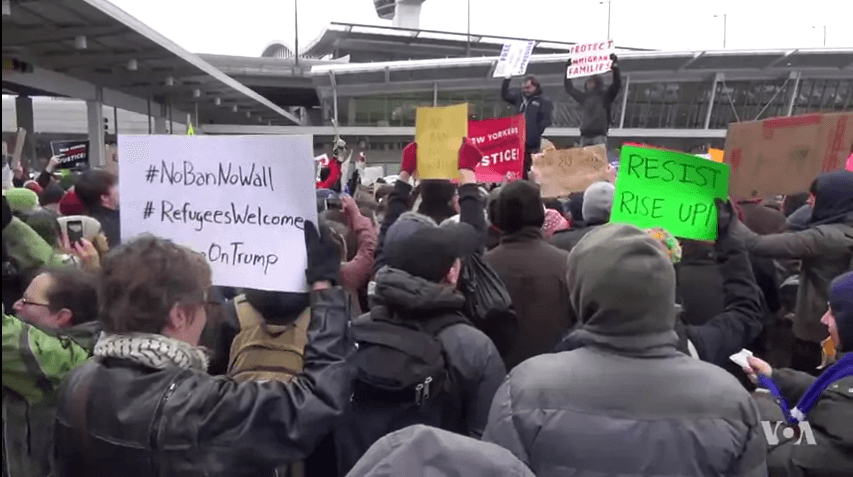

In a move defined more by crass politics than sound and logical policy, on Friday Donald Trump signed an executive order that banned citizens of seven majority-Muslim nations from visiting the United States for at least 90 days.
The executive order did not ban citizens from countries where Trump reportedly has business ties, including Egypt, the United Arab Emirates, Turkey and Azerbaijan. The executive order also does not apply to citizens of countries such as Indonesia, the world’s most populous Muslim nation; India, which with a population of at least 180 million Muslims; and Pakistan, the birthplace of one of the mass murderers in the December 2015 San Bernardino terrorist attack that prompted Trump to propose banning Muslims from entering the U.S. in the first place.
The lack of rhyme or reason behind the ban outraged a broad cross-section of the American population. It even nudged notoriously vapid reality TV star Kim Kardashian to tweet statistics about gun violence, terrorism and their perpetrators over the weekend.
As the order went into effect, people were stopped at U.S. airports and barred from entry -- even those who were vetted for visas or had valid green cards. Those detained included individuals who assisted the U.S. military abroad.
The resulting outcry has rattled markets while inspiring many technology companies to push back hard.
One of those firms, Airbnb, promised free housing to refugees and citizens who have been detained within the U.S. or were denied boarding onto American-bound airplanes abroad.
Airbnb’s policy was first made public on Saturday, when co-founder and CEO Brian Chesky sent the following tweet:
Airbnb is providing free housing to refugees and anyone not allowed in the US. Stayed tuned for more, contact me if urgent need for housing
— Brian Chesky (@bchesky) January 29, 2017
In an email released yesterday, Chesky said the company is actively looking for hosts who will house people affected by the travel ban for free. If no such hosts are available in a particular area, Airbnb says it will cover the costs of accommodating those citizens.
As for any Airbnb employees impacted by the travel ban, Chesky said the company is assisting them in any way possible.
Airbnb’s protest was echoed by other technology companies, the CEOs of which have described the temporary travel ban as one that is divisive, impedes innovation, and hurts employees who have earned their right to move to the U.S. for work and end up contributing to both society and the economy.
Google’s Sergey Brin, himself a refugee from Russia, joined protests at San Francisco International Airport over the weekend.
While Apple has not commented publicly on the ban, CEO Tim Cook emailed all employees, saying: “Apple would not exist without immigration” and “it is not a policy we support.”
On Facebook, Uber’s founder Travis Kalanick promised to start a fund that will support drivers who are not able to return to the U.S. Its largest competitor, Lyft, pledged $1 million to the American Civil Liberties Union (ACLU) over the next few years in order to fight this executive order and any similar measures the civil rights group sees as discriminatory.
Expect a long fight, but one from which many technology companies will refuse to back down.
“Barring refugees and people who are not a threat from entering America simply because they are from a certain country is not right, and we must stand with those who are affected,” Chesky wrote in his email to Airbnb employees. “The doors to America shall remain open, and any that are locked will not be for long.”
Image credit: Voice of America/Wiki Commons
FDA: Antibiotic Use in Farm Animals Is Still Increasing
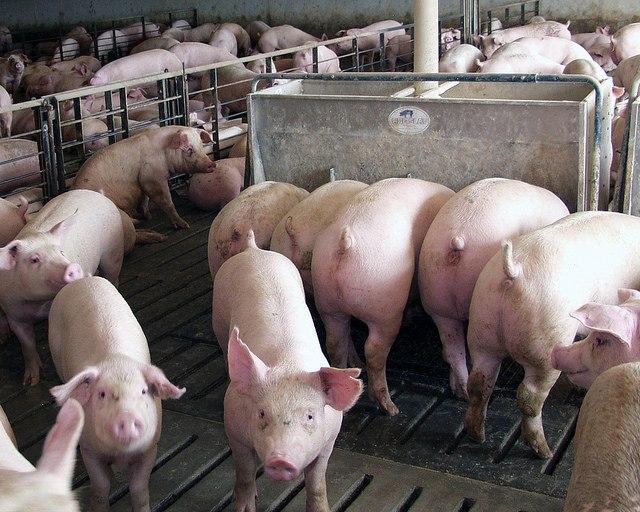

Livestock producers routinely give antibiotics to healthy animals in food production to prevent disease outbreaks in highly crowded conditions. Routine antibiotics also serve as growth promoters, bringing livestock to market faster and on less feed.
Considering all the pledges by food companies to serve antibiotic-free meat, you would expect antibiotic use in livestock to be in decline. A recent analysis by the U.S. Food and Drug Administration of 2015 antibiotic use in food production, however, paints a different picture.
The report shows that antimicrobial use in farm animals increased by 1 percent from 2014 to 2015. Antibiotics are a type of antimicrobial, but not all antimicrobials are antibiotics.
This is alarming news as antibiotic overuse creates antibiotic resistance, reducing antibiotics' effectiveness to cure infections.
To give a sense of scale: In 2011, less than 8 million pounds of antibiotics were used in human medicine, while nearly 30 million pounds were used in animal meat and dairy production.
The American Medical Association, the American Public Health Association and the World Health Organization are all in agreement that unnecessary use of antibiotics on farms is detrimental to public health.
Antibiotic use and antibiotic-resistant bacteria
Many of us are too young to remember when antibiotics were first introduced in 1944. Suddenly there was a miracle cure for tuberculosis, salmonella and pneumonia. The use of antibiotics, however, creates antibiotic-resistant bacteria. The more antibiotics are used, the more superbugs will be created.
"Sales of medically-important antibiotics for livestock were up 2 percent over 2014 numbers, and have risen 26 percent from 2009 through 2015," David Wallinga, a senior health officer with the Natural Resources Defense Council (NRDC), told TriplePundit. "This is alarming because the use of antibiotics in livestock is contributing to a public health crisis."
Antibiotic-resistant bacteria, sometimes known as superbugs, are a significant health threat. In fact, more than 2 million people get infected with antibiotic-resistant bacteria annually, and 23,000 die each year from infections from superbugs, according to the U.S. Centers for Disease Control and Prevention (CDC). The CDC maintains a list of the top drug-resistant threats and shows that multi-state outbreaks of multi-drug resistant salmonella are becoming common in the United States.
"Medically-important antibiotics are widely used on livestock, and this is significant in human medicine because they are identical or from the same class to ones used on humans," Wallinga told us. "This is important because of how resistance works. If you use a drug in the same form, you can acquire antibiotic-resistant bacteria."
Antibiotic use in meat production
Many factory farms routinely give antibiotics to healthy livestock with little or no oversight from veterinarians. These drugs are added to the food and water in low doses.
"For the past 40-plus years, antibiotics have been routinely fed to farm animals to prevent the spread of disease in chickens, pigs, and cattle that live together in the same barn building or in the same feedlot," explained Janice Neitzel, founder of Sustainable Solutions Group, a management consulting firm that guides food companies in making animal welfare sourcing improvements.
"Most of this use is not medically necessary," she continued. "It turns out that feeding antibiotics also promotes faster growth of the animal, so less feed is required to get the animal to slaughter weight. Retailers, restaurants and food manufacturers need to put policies in place limiting antibiotic use to the treatment of disease."
Because antibiotics create weight gain in livestock, it is also interesting to note that these drugs might do the same in humans. A study by New York University found there may be a connection to the increased obesity rate in humans and use of antibiotics in livestock.
Antibiotic-free commitments from food companies
Consumers are increasingly aware and concerned about the widespread use of antibiotics in meat. Chipotle and Panera Bread are leaders in serving antibiotic-free meat. Many restaurant chains, including McDonald's, Tyson Foods, Taco Bell, Costco, Pizza Hut and Subway -- and even some large school districts -- have also made pledges limiting the routine use of antibiotics in the meat they serve.Certainly, antibiotic use in meat production is not the only antibiotic use that is causing drug-resistant bacteria. The use of antibiotics needs to be dramatically decreased overall and limited to only medically-important uses. While overuse of other types of medicine doesn't directly impact others, the overuse of antibiotics has widespread social concerns. It is imperative that antibiotics remain effective to promote human health.
Image credit: Flickr/National Pork Board and the Pork Checkoff. Des Moines, IA USA
CEO Jerome Peribere On Sealed Air's Commitment to Sustainability


By Jerome Peribere, President and CEO of Sealed Air
By 2050, we’ll need three Earths to support our current rate of resource consumption – and the planet will have to sustain an additional 1.2 billion people. This clearly presents formidable challenges. If we are to meet the needs global mega-trends foreshadow, we must manage our resources better.
Looking back on 2016, I’m confident in and encouraged by Sealed Air’s accomplishments in the face of many economic and environmental challenges. We’re proving our commitment daily as seen in our aggressive sustainability goals, our operations, and our innovative solutions that prevent waste across supply chains – all of which allow us to reduce global impact and find better ways to leverage resources.
Despite the challenges of our global economy, Sealed Air continued to grow and invest in change-the-game solutions that drive the mega-trends of this century -- feeding our world’s growing population, transforming e-commerce and fighting disease.
Similar challenges will continue, possibly the most critical solution being the massive convergence of sustainability and technology – big data in particular. By capturing and analyzing the right information, we’ll successfully eliminate food waste and product damage, conserve resources, and, ultimately, create a better way of life.
This year, Sealed Air is proud to reaffirm its commitment to sustainability by underlining the important role businesses have in combating climate change.
We’re again dedicating our support of energy efficient operations as a signatory of the Business Backs a Low Carbon USA statement. Moreover, we’ve recently commissioned a study to better understand the perceptions and realities of resource usage in our customers’ operations.
The report, completed with the Economist Intelligence Unit, draws on a global survey and a complementary index that explore labor, natural and physical resource challenges. Thus far, findings have proven substantial.
Many of the industries Sealed Air serves are faced with labor and skills shortages, which may be this year’s leading resource challenge. In fact, 70 percent of those surveyed for the Global Resource Challenges Report said they’re facing labor challenges, thus proving that Sealed Air must continue to bring innovative, efficient solutions. For example, our robotics and smart dosing and dispensing solutions can save businesses millions.
As we continue into 2017, we know our knowledge, technologies, and determination will revolutionize operational needs. To meet the challenges the world faces, there is no room for waste.
Want more insights? Connect with Jerome Peribere on Twitter and LinkedIn. Or follow Sealed Air on Facebook, Twitter and LinkedIn.
Image credits: 1) Pexels; 2) Courtesy of Sealed Air
Trump's Infrastructure Wish-List Includes Renewable Energy Investments
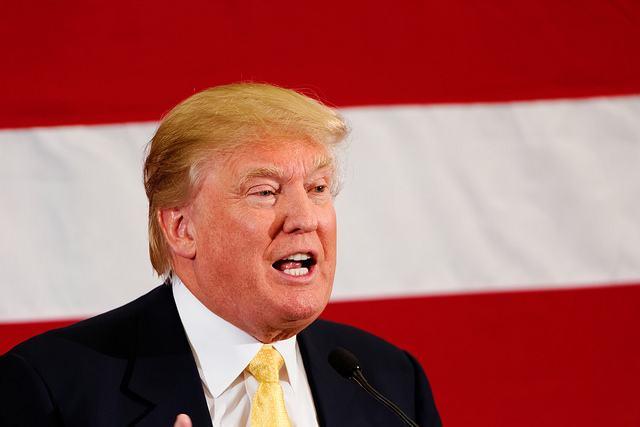

Last week a 50-page infrastructure priorities list, reportedly compiled by a consultancy on behalf of Donald Trump's transition team before the inauguration, surfaced on the Web. And some were surprised by the plentiful references to clean energy.
First released by McClatchy and the Kansas City Star, the list includes 50 infrastructure projects totaling $137.5 billion, of which half is expected from private investment. The plan places an emphasis on transportation systems, calling for renovations and construction of highways, bridges and rail systems.
But the wish-list also seems to prioritize green energy, spelling out plans to invest in wind and solar.
- Project No. 9: Plains and Eastern Electric Transmission Lines aims to move cheap, clean, wind energy from the western tip of Oklahoma to Memphis on a 720-mile transmission line. The project would bring enough clean energy for at least 1 million homes in the mid-South.
- Project No. 12: Hydroelectric Plants operated by the U.S. Army Corps of Engineers. The plan would replace 50-year-old turbines that fuel the production of clean energy within the hydro plant.
- Project No. 16: TransWest Express Transmission will “reliably deliver cost-effective renewable energy produced in Wyoming” to California, Nevada and Arizona.
- Project No. 17: Chokecherry and Sierra Madre Wind Energy would create up to 1,000 wind turbines on a farm in Wyoming.
- Project No. 21: Champlain Hudson Power Express will bring as much as 1,000 megawatts of clean and renewable energy to New York City.
- Project No. 49: Energy Storage and Grid Modernization is targeted at minimizing the magnitude of potential blackouts in California by increasing storage for renewable energy.
The projects above could add 9 gigawatts of clean power if it is finalized and placed into action.
The Keystone XL and Dakota Access pipelines, along with the Trump’s infamous border wall, did not make appearances on the list of initiatives.
The construction and engineering for these projects would “keep the equivalent of 24,000 people employed for 10 years,” according to an analysis from Christopher Helman of Forbes.
The 9 GW of renewable power created from the short-list of projects is equivalent to five coal-fired power plants, enough to power around 5 million homes.
Senate Democrats were quick to respond to Trump’s infrastructure plan, releasing an infrastructure plan of their own. Only they scoffed at the low dollar count invested in Trump’s plan and one-upped the commander in chief to the tune of $1 trillion. The money would be spent over the next 10 years on highways, airports, schools and renewable energy.
Here’s a better breakdown of the plan (from Vox):
- $210 billion to “repair crumbling roads and bridges”
- $110 billion to upgrade local water and sewer systems
- $180 billion to replace and expand existing rail and bus systems
- $75 billion to “modernize America’s ports, airports and waterways”
- $20 billion to expand high-speed broadband in unserved and underserved areas
- $100 for energy infrastructure and grid modernization: “A permanent incentive would be given for electricity generation, transportation fuels and energy efficiency improvements.”
Keep in mind the Trump administration has yet to release an official infrastructure package. Will the final plan include these clean-energy projects, and could the administration even take a few cues from the Democrats' proposal?
Only time will tell. But out of all of the administration's proposed initiatives, infrastructure may hold the most potential for bipartisan collaboration.
Image credit: Flickr/Michael Vadon
Unlikely Partners Aim to Improve Methane Leak Detection
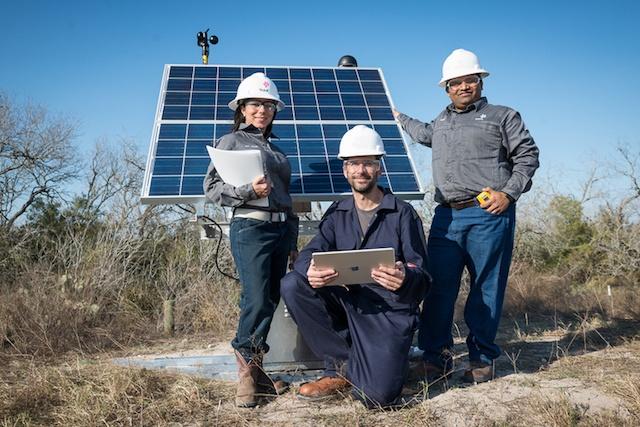

Natural gas is often described as a “bridge fuel” to a lower-carbon energy future because, compared with burning coal for electricity generation, burning natural gas produces about half as much carbon dioxide.
So, until non-carbon producing energy sources dominate, natural gas is at least half as damaging as coal when it is burned. And due to prevailing low prices of natural gas, the fuel is already widely displacing coal for electricity generation.
But we have known for a long time that natural gas has a problem which coal does not: It leaks. It leaks during extraction, storage and transportation -- right through the entire supply chain.
And because natural gas is comprised mainly of methane -- which is about 80 times more potent as a greenhouse gas than carbon dioxide in the first 20 years following emission -- natural gas can actually become more environmentally damaging than coal if there's enough leakage.
That's the impetus behind a curious union between the Environmental Defense Fund (EDF), Norwegian global energy company Statoil and Colorado-based technology startup Quanta3.
After three years of work, the unlikely partners say they're well on their way to deploying the first round-the-clock, automated monitoring system of methane leaks at a Statoil facility in Eagle Ford, Texas.
Detecting leaks as soon as they occur means they can be fixed promptly -- mitigating the harmful effects of unnecessary releases of greenhouse gases.
“Methane is responsible for 25 percent of global warming, and the oil and gas industry is the biggest source of methane emissions,” Aileen Nowlan, who leads EDF’s work to minimize methane emissions from the oil and gas industry, told TriplePundit by phone last week.
Today, checking for leaks of methane -- a colorless and odorless gas -- are either not performed at all, or are at best done periodically. As such, leaks are never caught when they start.
Not only that, “super-emitters” form a concentration of the leakage problem, Nowlan said. Ten percent of production sites account for 80 percent of methane emissions. And in the U.S. alone, 9.8 million metric tons of methane were released by the oil and gas industry in 2014.
Some of those emissions are an unfortunate technical condition of natural gas and oil production, while the remainder are what are called “fugitive emissions” -- that is to say, leaks which Quanta3’s technology aims to detect immediately. Today, EDF estimates fugitive emissions account for approximately 50 percent of total methane emissions.
To put that into context, EDF told us that 9 million tons of methane released into the atmosphere would have the same effect over 20 years as running 200 coal-fired power plants. The EPA (for now, at least -- grab this link while you can) has committed to reduce methane emissions by 40 to 45 percent of 2012 levels by 2025. That would be the equivalent of shutting about 90 coal-fired plants -- much of that could be achieved by detecting and fixing leaks at the point of production.
The environmental value in doing that is clearly significant. But Nowlan told us, “Companies did not know how much was leaking until EDF started getting involved” and added “the state of disclosure is still not good enough.” This is no doubt, in part, because there are no federal regulations for leak detection and repair (nor can we realistically expect there to be any new ones under President Donald Trump).
But even so, it’s actually quite astounding the industry isn’t addressing the problem more aggressively. EDF reports $2 billion a year is lost in the U.S. through wasted, unburned natural gas. That rises to $30 billion a year when viewed globally.
Perhaps that alone will bode well for the future adoption of leak-detection technologies, notwithstanding potential changes to EPA regulations.
In any case, Nowlan told us, the industry is not monolithic.
In fact, some energy producers are highly motivated. Statoil became involved in this project because it took a position of stewardship and partnered from a sense of commitment to do a better job with leak mitigation. In an EDF press release, the company is quoted as saying, “Statoil aims to be recognized as the most carbon efficient oil and gas producer.”
The three-way partnership between EDF, Statoil and Qunata3 grew out of EDF’s Methane Detectors Challenge (MDC), which invited U.S.-based technology developers to innovate marketable continuous methane-detection technologies.
Quanta3’s technology deployed with Statoil in Texas uses a stationary “tune-able laser diode” technology to detect methane. In simple terms, air from an oil or gas production site passes through a laser, which is able to measure the level of concentration of methane continuously.
Of course, there are normal operational concentrations of methane on a site. So, to avoid false positives, the system takes into account the weather and other environmental factors, and with cloud-based data analytics, determines if there is leak, where it's located and its estimated size.
In an EDF press release, Statoil says, “Further qualification of this technology will be performed by long-term deployment across various onshore facilities throughout 2017.”
Image courtesy of EDF
Playing Games with Social Good: The Next Big Thing in Philanthropy


By Jennifer Dawson
Given the sports analogies flying around, I was tempted to call this post “lessons philanthropy can learn from baseball and hockey” — and it wouldn’t have been a stretch, given the connection between games and giving.
In fact, social good, philanthropy and community engagement can all benefit from adopting principles from online games -- including challenges, competition, fun, measurement and rewards, but it rarely if ever does.
Until now.
Colin Duetta is founder and CEO of Xocial — pronounced soh-shuhl — an online community that connects people and organizations to causes they care about then inspires them to take action using the principles of online gaming. Jason Rosado is CEO and president of GivKwik, an organization that connects companies, causes and communities by offering turnkey solutions for cause marketing and employee engagement.
With connection and social good at the forefront of both organizations, it’s no surprise they united for a common cause — GivKwik’s GIV.NYC 2016 event in honor of Giving Tuesday.
Their partnership has made them the My Two Dads of philanthropic engagement, bringing together a platform for gamifying goodness (Xocial’s) with a platform for helping brands achieve greater social impact (GivKwik’s). The offspring of their technological union are taking their first baby steps toward changing the world of philanthropy.
I sat down with them to find out more.
Jennifer Dawson for TriplePundit: I was getting some background from Colin yesterday and he described your relationship as a love story. So, how did this love story start?
Colin Duetta: I don’t know if I’d describe it that way, Jason. She’s ad libbing already!
Jason Rosado: Well, we’re definitely dating.
CD: If we could only start by saying we’re both happily married!
JR: I was introduced to Xocial through a friend who attended South by Southwest and I saw a fit right away. If you look at the life cycle of a company in our space, the first, second and third innings of the game are about building out the tech infrastructure, the database, the brand, the credibility.
After that, your fourth, fifth and sixth innings are strategic. You have this platform that can do these things, now what do you want to add on top? Gamification was something we’ve wanted to do, for sure. But we didn’t have the time or the bench strength to get into designing all the game mechanics. Xocial came along at a really nice time, when we could come together around a specific campaign for Giving Tuesday.
CD: I would echo a lot of that statement. We felt very strong in our convictions about bringing gamification to social good actions but as we looked to our fourth, fifth and sixth innings—this is all going to be about baseball, Jason—we knew we had to address where the donation component would come from.
We wanted to bring in the engagement but didn’t want to take responsibility for the donation aspect. What GivKwik does with pooled philanthropy has really taken it to the next level. So there was this natural fit.
JR: Since we’re partnering with Canadians here, I can use my favorite Wayne Gretzky quote. He always said he skated to where he thought the puck would be, not to where it was. With this partnership we could skate to where the puck would be, which is Millennials, a highly targeted audience for the future of philanthropy. Millennials are very familiar with and attracted to game mechanics and game interactions.
3p: What were you trying to accomplish with the Giving Tuesday campaign?
CD: From our side, it was a concept validator. This was going to be a learning experience. Even though there’s the big goal, in pilots it’s so important to not overreach. That understanding was there between our two organizations from the get-go.
JR: I agree 100 percent. From our perspective, it was our third year doing an event in New York City on Giving Tuesday, where we get 10 nonprofits to pitch on a stage for the chance at a $10,000 grant.
I never wanted this event to be people sitting in their seats watching somebody on stage and then going home. I wanted it to be very interactive and for people to understand the power of the network, where the 200 people in the room become two million people online.
We thought that adding the gamification touch to the campaign would drive engagement, keep people coming back to the online portion of the campaign, and introduce the idea of reward and competition at the individual level, not just the 10 nonprofits on the stage.
It was the perfect proof of concept. It validated ideas we’d had about the best approach to take.
CD: For us there was an unexpected concept validator, which was using Xocial at a live event. It was the first time we’d done it. Having that “we’ll get through this together” attitude meant we were able to deliver that live scenario with a certain comfort.
We saw that not only can Xocial be used, but that it can be successful. The best part was our Twitter integration. People really are so focused on the power of the social network and we could contribute to telling social stories with the automatic tweeting of the challenge submissions.
JR: To piggy back on that, Xocial generated a lot of additional content documenting the event. We had our own photography and video team, but the user-generated content from the competition between participants exponentially increased what we had.
3p: Were there any early bumps in the road?
JR: Both parties are fairly visionary, so it was making sure that we weren’t biting off more than we could chew. Colin’s team was great at documentation and communication and tracking requirements and following up with my team about what was required. If we needed to jump on the phone we did.
CD: I don’t want to use the word “startup,” but you expect those types of things. We’re dealing with high-end technology, a live event, a pilot, so the openness between the teams was critical. Jason and I were able to convey the vision and then step back and let the teams engage with each other under the open umbrella.
We had to scale back the grand vision. Jason’s team was strategizing, organizing and delivering a very complex event and we were the bolt-on pilot. We had to understand that. I’d say the bumps in the road strengthen the partnership. To know that you can go through that kind of experience and have the results we did, what could we do with more time and resources?
JR: [Laughs] There were a couple of places where it was obvious that we were building the bridge between our two platforms as we were crossing it. It was a good exercise in pushing both our teams to get the platforms where they needed to be to support this type of event.
3p: Was there something that surprised you along the way? Moments where you went “Wow, I can’t believe we did that,” or “Wow, I really didn’t expect that!”
JR: I can’t think of a wow. I can think of a phew! Like “Oh wow, we did actually pull that off in the timeframe we hoped for.” [Laughs]
CD: [Laughs] The a-ha moment for me was when we showed up at the live event. That’s when I understood what these guys were trying to accomplish and how xocial could engage on the floor. Having been in software for 16 years, there’s two ways these things can go. There’s the uptight “We counted on you guys to do this, this was our expectation” or the “Let’s team up and get this thing done.”
It’s amazing what happens when you approach problems from that second perspective. When the first couple of snapshots came up instantaneously on the leaderboard I stopped sweating a little bit. Then when we got our first dozen people engaged, that was our second brow wipe. And then it was time for some beers.
JR: I’m not sure that Colin expected us to ask him to roll up his sleeves and handle that aspect of the event. To his credit he did it without flinching and even got his wife involved as well. We were super excited about what we accomplished at the end of it all.
CD: Yeah, my wife Megan was my big story. She’s an actress at heart but just the other night we were talking about the stresses of being on the arm of the corporate guy at these different events. When she has a role, it’s so much better for her. At the Giving Tuesday event she could be the Vanna White to the Xocial component and it was hilarious to see. She really dove in. It made it that much more fun.
3p: How was the GIV.NYC program enhanced by your partnership? You’ve mentioned innovation and authentic storytelling so far. Anything else?
JR: We could take our platform from a simple donor platform to something that was gamified. It wasn’t just “go to this website, browse around, vote for your favorite charities.” By plugging in the Xocial component you could win something—which is still relatively unheard of in the space. That drove engagement from our perspective.
CD: I’ll echo that. But it takes a platform like GivKwik to make our little contribution shine.
3p: Indulge me for a second. I’d like you to pretend the other person isn’t here and tell me what it’s like to work with him.
JR: You go first. [Laughing]
CD: [Laughing] I come from over a decade’s worth of custom IT app development experience, and client management has always been at the forefront of what I do. You try to find out what’s important to that person and meet expectations.
Jason and I don’t know each other super well, but from a business perspective, there’s a bit of a kindred spirit there. We’re both upfront and honest in our expectations. When you have that from your leadership it boils down to your teams.
JR: Aw shucks. [Laughs] For me, being a born and raised New Yorker I have to be conscious of how I might come off, perhaps a bit brash and to the point. And on the flip side, I’m not sure if Colin is a born and raised Canadian, but the first thing Americans think of is that Canadians are very nice.
Ultimately, you couldn’t ask for a nicer guy than Colin. We were kindred spirits—both skating to where the puck was going to be. Part of the fun of working in this space, not just with Colin but with others, is that there’s competition but it’s very friendly competition. We could’ve looked at each other and said, “Xocial could end up doing what GivKwik is doing and vice versa, we shouldn’t talk to each other.” But we saw strength in partnership. I’m glad we took that risk.
3p: Any specific stories related to Xocial and GivKwik that made you laugh? Warmed your heart? Gave you additional ideas?
CD: We showed up in New York in a torrential downpour that lasted two days and I think we took seven hours of Ubers. When we first arrived at the live event—a little late and carsick—it was literally T-minus 2 hours to the event. It was stereotypical Manhattan, you couldn’t find the door, the elevator gave me pause to say the least, but that’s just the culture in New York. It was amazing to walk in there to see the calm, cool and collected GivKwik team.
JR: For me the most exciting part of an event is knowing you’re going to produce it and the rest becomes an ongoing state of anxiety about all the details. Who will be on stage? What will the run of show be? Who will we partner with? What will the online campaign look like?
The single best thing you can have when you’re producing an event is something you don’t have to worry about. I had my own nervousness about whether the Xocial aspect of the campaign would take. Once things got rolling, the screen was filled with completed challenges and pictures and the Twitter feed was blowing up—ultimately we reached 1.3 million people with the #GivNYC hashtag.
3p: What lessons did you learn from your work together that you’d share with someone else thinking of using Xocial integration for their program or event?
CD: We’ve learned just how much we can share opportunities with each other. There’s so much GivKwik does that Xocial isn’t in the business of doing, and they do it very well. As we grow our networks, we’ll find opportunities where Xocial isn’t the fit, GivKwik is. Any event with a pooled philanthropy or review-and-vote approach, that’s GivKwik. We can offer our little piece around gamification and help deliver a more exciting event.
JR: Game design is very nuanced. It really focuses on the motivations of the players and an essential baseline of fairness and realistic achievements. There’s a lot of thought that goes into that, and while I would love to spend all my days working on it [laughs], I have the rest of this platform to continue to build.
That’s why the partnership with Xocial made so much sense. The lesson learned for a potential client is to really think about what motivations, incentives, rewards and point scenarios will make the user experience as engaging as possible. That’s not something you just pull off the shelf. You want to put yourself in the shoes of the user, the player, the event attendee to try to create that experience. That’s something that Colin and his team did so well for us.
3p: Where do you see the puck going next in your relationship?
JR: We do have another campaign in the works and we’re thinking of bringing in a Xocial component to add an extra level of competition and engagement. We’d also like to integrate Xocial features in our employee engagement campaigns. We’d like it if gamification became part of our services at GivKwik.
CD: Xocial’s primary business is around partnerships, not only with social good organizations but also forward-thinking technology companies. This next endeavor with GivKwik will allow us to move forward with the relationship and the technology. I think we’re taking social good philanthropy and employee engagement to the next level. This is where the dream is. It’s not just where the puck’s going to be next—it’s where the puck’s going to land in the net.
For a recap of the event in NYC, check out the video below.
https://www.youtube.com/watch?v=uEd400_iIRk
Images courtesy of GivKwik
Jennifer Dawson is a freelance writer and community activist who has covered subjects as diverse as community gardens, industrial insulation and men’s socks.